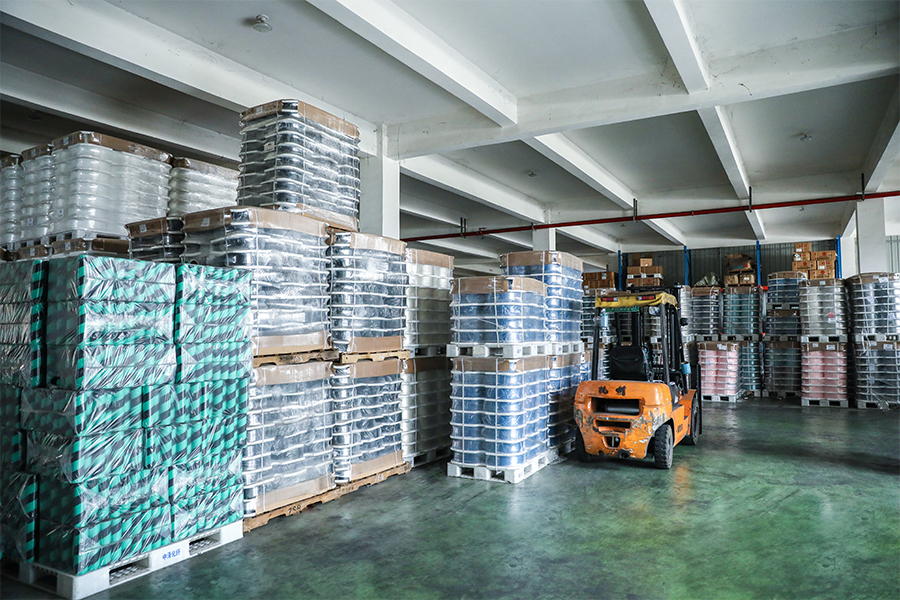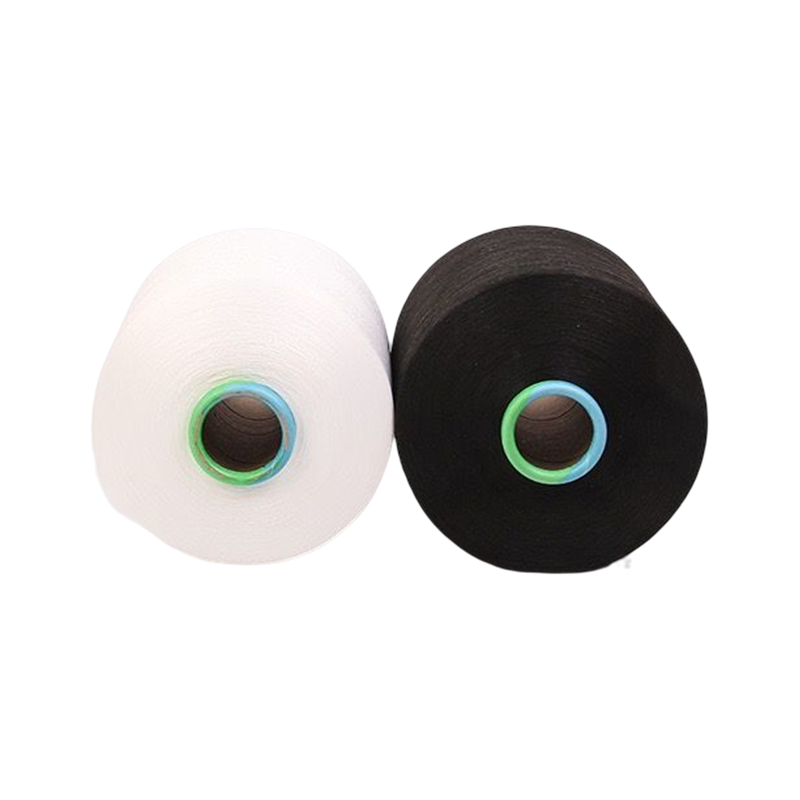- 1 Understanding the Core Principles of Heat-Setting
- 2 Critical Parameters in the DTY Heat-Setting Process
- 3
- 4 Optimizing for Specific Yarn Properties
- 5 Common Defects and Troubleshooting
- 6 FAQ
- 6.1 What is the ideal heat-setting temperature for standard 150D/144F Polyester DTY yarn?
- 6.2 How does heat-setting tension affect the final elongation of the yarn?
- 6.3 Why does improperly set DTY yarn lead to uneven dyeing?
- 6.4 What are the key differences between steam setting and hot air setting for DTY yarn?
The heat-setting process is a critical stage in the manufacturing of Polyester DTY yarn, directly influencing its final texture, elasticity, and dimensional stability. This procedure involves the application of heat and tension to the yarn, permanently setting its molecular structure and eliminating internal stresses. A deep understanding and precise control of the key parameters in this process are essential for producing high-quality yarn that meets specific application requirements. This analysis delves into the core aspects of heat-setting, providing a comprehensive guide for optimizing yarn performance.
Understanding the Core Principles of Heat-Setting
Heat-setting fundamentally alters the physical properties of Polyester DTY yarn by relaxing the polymer chains and allowing them to re-crystallize in a more stable, elongated state. This thermal treatment locks in the yarn's bulk and stretch characteristics, which are defining features of the Draw Textured Yarn (DTY) process. The effectiveness of this operation hinges on the interplay of several variables, each of which must be meticulously calibrated.
- Molecular Relaxation: Heat provides the energy for polymer chains to overcome intermolecular forces and move into a lower energy, more stable configuration.
- Crystallinity Increase: The process increases the degree of crystallinity within the polyester, enhancing the yarn's strength and thermal stability.
- Stress Relief: Internal stresses induced during the drawing and texturing stages are permanently eliminated, preventing subsequent shrinkage.
- Dyeability Modification: The changes in the fiber's microstructure directly affect how it will absorb dyes later in the manufacturing chain.
Critical Parameters in the DTY Heat-Setting Process
To achieve consistent and superior yarn quality, manufacturers must focus on a few critical parameters. The question of how to control temperature in DTY yarn heat-setting is often the first and most important one addressed, as it is the cornerstone of the entire process.
Temperature Control and Its Impact
Temperature is arguably the most influential parameter in the heat-setting process. It must be high enough to allow for molecular mobility and re-organization but not so high as to cause degradation or yellowing of the polymer. The optimal temperature range is typically between 180°C and 220°C, depending on the yarn's denier, luster, and intended end-use.
- Low Temperature (Below 180°C): Results in incomplete setting, leading to high shrinkage and poor dimensional stability in downstream processes.
- Optimal Temperature (180-220°C): Achieves a stable structure with good elasticity, minimal shrinkage, and consistent dye uptake.
- Excessive Temperature (Above 220°C): Risks polymer degradation, loss of tensile strength, and discoloration of the yarn.
| Yarn Type | Recommended Temperature Range | Primary Effect |
| Fine Denier ( | 185°C - 200°C | Prevents brittleness, ensures uniform dyeing. |
| Standard Denier | 195°C - 210°C | Balances elasticity and stability for weaving/knitting. |
| Heavy Denier (>300D) | 205°C - 220°C | Ensures complete heat penetration for core stabilization. |
Time and Tension: The Supporting Pillars
While temperature provides the energy for change, the duration of heat exposure (time) and the mechanical force applied (tension) work in concert to define the final yarn properties. Understanding the role of tension in DTY yarn heat setting is crucial for preventing defects and achieving the desired hand-feel and elongation.
- Dwell Time: This is the time the yarn spends in the heat-setting chamber. Too short a time results in inadequate setting, while too long can reduce bulk and lead to over-setting.
- Tension Level: Applied tension controls the yarn's elongation and final denier. High tension can over-stretch the yarn, reducing its elasticity and bulk, while low tension may lead to uneven setting and poor package formation.
Optimizing for Specific Yarn Properties
The ultimate goal of controlling heat-setting parameters is to produce a yarn tailored for its final application. For instance, the requirements for a high-elasticity DTY yarn for sportswear are vastly different from those for a yarn used in home furnishings.
Achieving High Elasticity and Bulk
Producing a high-elasticity DTY yarn for sportswear requires a delicate balance. The heat-setting process must stabilize the yarn without crushing the crimp structure created during texturing, which is responsible for its stretch and bulk.
- Use a moderate temperature setting (towards the lower end of the range) to preserve crimp elasticity.
- Apply lower tension to avoid stretching out the crimps and to maintain high bulk.
- Optimize the cooling rate after heat-setting to "lock in" the bulky, crimped structure.
Ensuring Dimensional Stability for Fabrics
For applications where minimal shrinkage is critical, such as in uniform fabrics, the heat-setting process must be more aggressive. This involves a focus on achieving dimensional stability in polyester DTY yarn through thorough molecular re-organization.
- Employ a higher temperature (towards the upper end of the range) to maximize crystallinity and stress relief.
- Ensure sufficient dwell time for the heat to fully penetrate the yarn bundle.
- Maintain consistent and controlled tension to produce a uniform yarn that will not shrink unevenly.
Common Defects and Troubleshooting
Even with advanced machinery, deviations in process parameters can lead to quality issues. Recognizing these defects is key to maintaining a high standard. A frequent challenge is addressing uneven dyeing issues with DTY yarn, which is often a direct consequence of inconsistent heat-setting.
- Barre Effect (Stripes in Fabric): Caused by uneven heat-setting across different yarn batches or within the same yarn package, leading to differential dye uptake.
- Poor Crimp Stability: Results from insufficient heat-setting, causing the yarn to lose its bulk and elasticity during subsequent processing.
- Yellowing: A sign of thermal degradation, typically due to excessively high temperatures or prolonged exposure.
- Shrinkage Variations: Inconsistent temperature or tension profiles during setting lead to yarn that shrinks at different rates, causing fabric distortion.
FAQ
What is the ideal heat-setting temperature for standard 150D/144F Polyester DTY yarn?
The ideal temperature for a standard 150D/144F Polyester DTY yarn typically falls within the range of 195°C to 205°C. This range is effective for achieving a balance between good dimensional stability and the retention of desirable elastic properties. However, the exact "sweet spot" can vary based on the specific machinery, the heating medium (saturated steam vs. dry heat), and the desired final hand-feel. Manufacturers often conduct small-batch trials to fine-tune the temperature for their particular setup and product requirements.
How does heat-setting tension affect the final elongation of the yarn?
Tension during heat-setting has a direct and inverse relationship with the yarn's final elongation. This is a core aspect of the role of tension in DTY yarn heat setting. Higher applied tension will stretch the yarn molecules further during the thermal stabilization process, resulting in a yarn with lower elongation-at-break. Conversely, lower tension allows the yarn to retain more of its crimp and stretch, yielding a higher elongation. For applications requiring a high-elasticity DTY yarn for sportswear, a lower tension setting is paramount to preserve its stretch and recovery capabilities.
Why does improperly set DTY yarn lead to uneven dyeing?
Uneven dyeing is one of the most common and costly defects linked to the heat-setting process. It occurs primarily due to variations in the yarn's microstructure, which affect its affinity for dye. If the heat-setting is inconsistent—whether in temperature, time, or tension—some sections of the yarn will become more crystalline and densely packed than others. Dye molecules diffuse more easily into the less crystalline, amorphous regions. Therefore, unevenly set yarn will absorb dye at different rates, creating barre or shaded effects in the final fabric. Solving uneven dyeing issues with DTY yarn invariably involves auditing and optimizing the consistency of the heat-setting process.
What are the key differences between steam setting and hot air setting for DTY yarn?
Both steam and hot air are common mediums for heat-setting, but they impart different properties to the yarn. The choice between them is a key factor in achieving dimensional stability in polyester DTY yarn with the desired characteristics.
| Parameter | Steam Setting | Hot Air (Thermosetting) |
| Heating Medium | Saturated Steam | Dry, Hot Air |
| Typical Temperature | Lower (120-135°C) | Higher (180-220°C) |
| Effect on Hand-feel | Softer, Fuller Hand | Comparatively Crisper Hand |
| Crimp Definition | More lively, springy crimp | More stabilized, set crimp |
| Dyeability | Generally results in darker dye shades | Standard dye uptake |
Steam setting is often preferred for yarns destined for apparel where a soft hand is critical, while hot air setting provides superior stability for technical and home furnishing applications.

 English
English
 Español
Español


-1.png)


-2.png)
-2.png)
-3.png)
